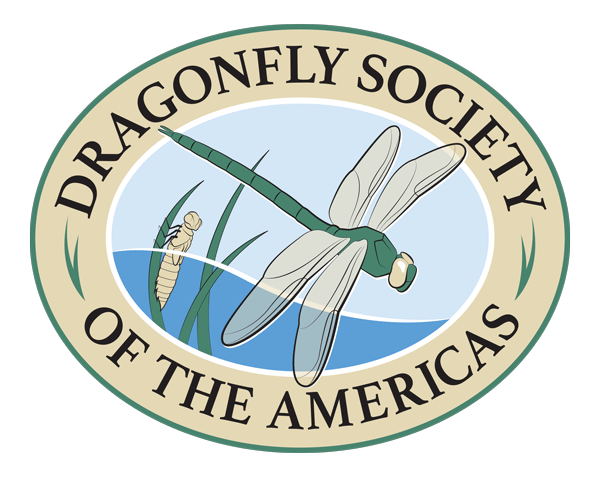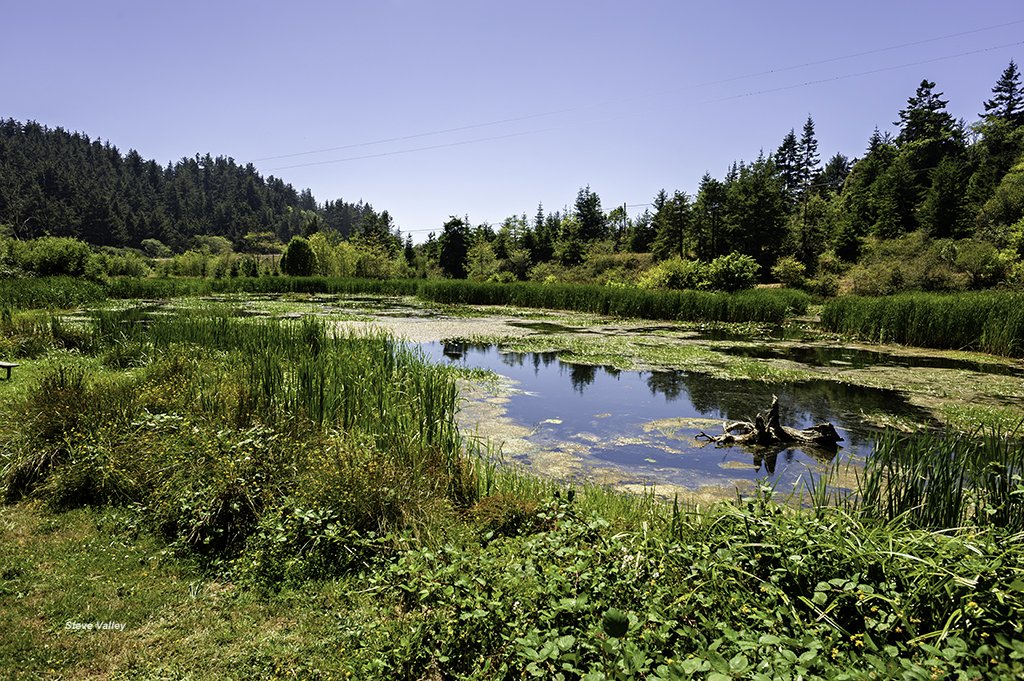Female Desert Forktail, Ischnura barberi, at Borax Lake, Harney County, Oregon, September 18, 2010. Photo by Jim Johnson.
Male Red Saddlebags (Tramea onusta) in hand, pond at Arizona Beach State Park, Curry County, Oregon, July 29, 2015. Photo by Jim Johnson.
Desert Forktail (Ischnura barberi) and Red Saddlebags (Tramea onusta)
The DSA “Species of the Month” for February are Desert Forktail (Ischnura barberi) and Red Saddlebags (Tramea onusta). The forktail is a small damselfly about 1–1.4 inches (28–35 mm) in the family Coenagrionidae, favoring alkaline and saline wetlands of the southwestern US and northwestern Mexico. The saddlebags is a mid-sized dragonfly about 1.5–1.9 inches (41–49 mm) in the family Libellulidae, ranging widely from the Great Lakes region and the southwestern US south to Venezuela and throughout the West Indies. Read on to hear about dragonfly chaser Jim Johnson’s adventures with these two species.
Two Fantastic Oregon Firsts
This is my tale of two “firsts” for the state of Oregon in the United States. The first was a completely unexpected, serendipitous find of a lone individual in 2010. The other followed a surge of multiple individuals toward the state, reported nearly in real time, and intercepted with tactical precision followed by additional reports over a large region of the state in 2015. These two events share one characteristic: the species involved have not been found in Oregon again. So far.
My First “Oregon First” —Desert Forktail, (Ischnura barberi)
Borax Lake is an interesting place to visit in the remote high desert of southeastern Oregon. In an arid landscape with many usually dry lake beds, this one looks out of place. It’s a 10-acre lake on a raised mound and always full of water. You might not realize it just by looking, but it is the product of an active geothermal spring below the lake’s surface. The mound on which the lake rests was created by the deposition of precipitates, like borax salts, over eons.
Borax Lake, Harney County, Oregon, July 29, 2023. Photo by Jim Johnson.
The site attracted commercial borax miners and their mule teams, who delivered their product to Winnemucca, Nevada. That ended in 1902. The site is now permanently protected by the Nature Conservancy, but you can still see a rusting iron boiler there, used to collect the borax. In the shallows of the lake, you can also see tiny “guppies” which are the Borax Lake Chub (Gila boraxobius), in the only place on Earth they call home. This species was removed from the US Endangered Species List in 2020.
On September 18, 2010, I was visiting Borax Lake with friends Steve Valley and Josh Vlach. While wandering around the lake’s margin, I encountered a female damselfly that I did not recognize. My first sight of it was as it escaped a mob of male bluets (mostly Alkali Bluets, (Enallagma clausum) over the lake’s surface. The throng of harassing damselflies lost interest when the subject of their pursuit took refuge in a lakeside greasewood shrub only a few feet from where I stood. I was able to take a closer look and obtain a few photos as the damselfly took a breather, but I was perplexed by this obscure thing with virtually no thoracic pattern. It was clearly a female coenagrionid, but I could not be certain of anything else at that moment. I netted it and took it home for a closer examination.
Female Desert Forktail, Ischnura barberi, at Borax Lake, Harney County, Oregon, September 18, 2010. Photo by Jim Johnson.
Only when I was able to examine the specimen critically did I realize that it was a female Desert Forktail, (Ischnura barberi)—a first for Oregon. Not only that, but it was at the time—and still is now—the northernmost record for the species. This find was quite a shock since this species was not on my “wish list” of species that might be found in Oregon. Borax Lake seems like the perfect place for it.
So, where there’s one there must be more, right? There must be a breeding population there at Borax Lake or somewhere nearby.
Borax Lake aerial view, Harney County, Oregon, June 22, 2007. Photo by QDM at English Wikipedia, CC BY 3.0 (https://commons.wikimedia.org/wiki/File:Boraxlake.jpg).
Surely, more were to be found during repeated visits in the years that followed. No! It was a singular event involving a single individual. Maybe there is a little, overlooked pocket of preferred microhabitat harboring a population of them, and we have not stumbled across it. Or maybe that one individual was carried aloft into Oregon like aerial plankton, and she dropped down on that jewel of a lake in the middle of a wide-open expanse of desert. We’ll never know what happened in her case, but I keep looking for more.
My Second “Oregon First” —-Red Saddlebags (Tramea onusta)
During mid-July 2015, the Pacific Northwest was on the cusp of a heat wave. Associated with this was a thermal low-pressure trough extending from central California north into western Oregon. Reports of Red Saddlebags (Tramea onusta) reaching coastal northern California were coming in on odonate-related email listservs and Facebook groups. Tony Kurz found one in coastal Del Norte County only about 10 miles from the Oregon border. What is 10 miles to a broad-winged “glider” with a warm tail wind? I knew it was time to act.
Male Red Saddlebags (Tramea onusta) in flight, pond at Arizona Beach State Park, Curry County, Oregon, July 29, 2015. Photo by Jim Johnson.
Steve Valley and I were able to travel to the southern Oregon coast on July 29, 2015. I had a particular site in mind for our first stop during the warm early afternoon hours. It was a pond at Arizona Beach State Park; about 45 miles north of the California border, a fraction of a mile from the Pacific Ocean, and easily accessed from Highway 101.
Pond at Arizona Beach State Park, Curry County, Oregon, July 29, 2015. Photo by Steve Valley.
Within a minute of exiting the vehicle, we spotted multiple Red Saddlebags mingling with many Black Saddlebags (Tramea lacerata). It was difficult to estimate how many Red Saddlebags were present, but we figured that there were at least four lone males plus a tandem pair. Likely more were present, coming and going between the pond and the surrounding landscape. The dragonflying was not only figuratively hot, but it was literally hot with a high temperature of about 100°F. Very unusual for the normally temperate Oregon coast!
Male Red Saddlebags (Tramea onusta) in hand, pond at Arizona Beach State Park, Curry County, Oregon, July 29, 2015. Photo by Jim Johnson.
We had no idea at the time, but this find was only the beginning of a Red Saddlebags incursion into the western portions of the state which would extend 175 miles, be experienced by many people, and last for almost two months. But as far as we know, the species has not reappeared. Some wondered if a continuing population might result since plenty of ovipositing was observed, but there was no sign of offspring the following year. I suspect our winter temperatures are too cold, for too long, for the nymphs to survive.
Still Looking
I’m sure both species will be observed in Oregon again, but it’s going to take a lot longer than I thought. Thirteen years and counting in one case; eight plus years in the other. I could go on about randomness and serendipity on one hand, and research and strategy on the other, but sometimes what matters is just getting out and looking.
And patience. Lots of patience.
Jim Johnson has been chasing odonates since 1995—mostly in the Pacific Northwest. He has served on the DSA executive council as Regular Member, President, Secretary (currently), and as a member of the ARGIA/BAO editorial team since 2005. Contact him at gomphusjim@gmail.com.









